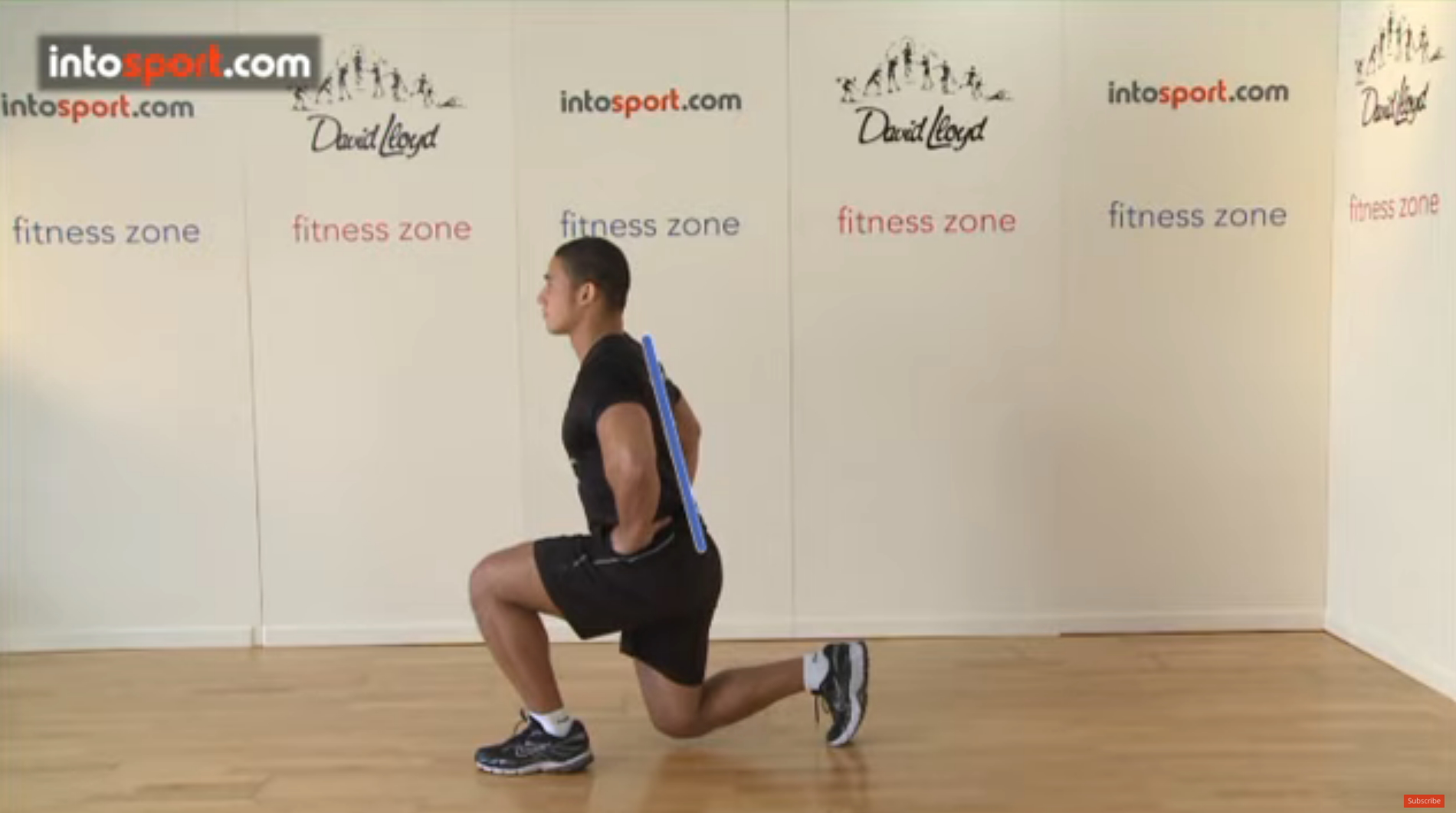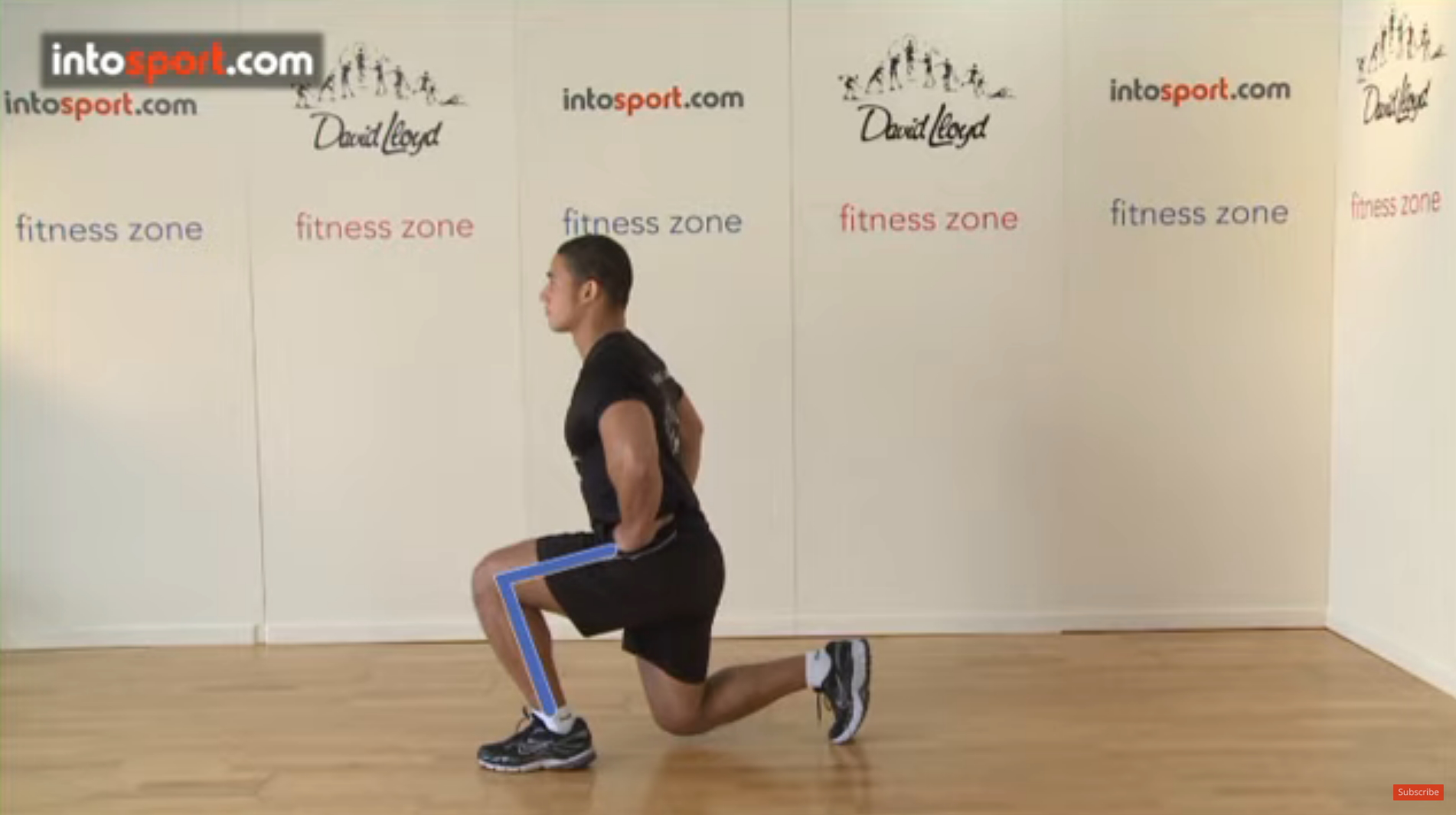Lunges are one of the most popular exercises for the legs and buttocks. Lunge means ‘to swing’, which refers to swinging your leg forward during the exercise. Make sure you perform the exercise correctly if you want to reap the benefits.
ABOUT THE EXERCISE
Lunges are a unilateral, or unilateral exercise. It is basically a bodyweight exercise, but you can also make the exercise heavier by performing it with a barbell or set of dumbbells. Because the lunge is also essentially a “balance trick”, it’s a great exercise for beginners to work on their balance.
Whether lunges are a basic or an auxiliary exercise is a matter of debate. A powerlifter will mainly see it as an auxiliary exercise for his squat and also deadlift. If you consider the exercise as a bodyweight exercise, it is a basic exercise, heavier than the bodyweight squat.
The lunge is a multi-joint exercise, which means that there is movement in two or more joints and that several (large) muscle groups are trained.
MUSCLES AT WORK
With lunges you actually train your entire lower body: both your hips and legs.
In the legs, you mainly train the quadriceps (‘quads’), the four-headed thigh muscle that is responsible for extending your knees and flexing your hips. The large gluteal muscle (gluteus maximus) is responsible for extending your hips in the exercise. The hamstrings, at the back of your thigh, and your calves are also trained, as there is also movement in your ankle joint. To keep your spine in a neutral position, your back stretcher (erector spinae) is put to work.
Lunges are mainly considered an exercise for the buttocks and to a lesser extent the quadriceps. By making adjustments to the performance, you can involve one of these muscle groups (even) more in the exercise, as we will see later.
CORRECT EXECUTION
Because lunges require the necessary balance, it is important to perform them on a stable surface. Avoid doing lunges in the rubber tile or mat area of your gym. Also, don’t wear running shoes. The implementation is as follows.
1. Place your hands on your sides. If you want to make the exercise harder, hold a pair of dumbbells in your hands or – more difficult – position a (weighted) barbell on your shoulders
2. Inhale.
3. Swing your leg forward and take a big stride – about one and a half times your normal stride length, which for many amounts to about three feet. Remember: the bigger the stride, the more hip and glutes you involve in the exercise. Don’t step out too far: ensure a good stretch in your quads and buttocks, but in such a way that you remain stable. Also don’t step out too short, because that is not only uncomfortable, but also less effective.
4. Keep your back straight throughout the exercise, ie keep your spine in a neutral position. It is okay to lean forward a little bit, with your back straight, for those who want to put the emphasis more on the buttocks. You should certainly not bend your back, because then the back muscles take over part of the work.
 Source: Intosport
Source: Intosport5. Bend the hip and knee of your front leg until the knee of your back leg just barely touches the floor. The knee of your front leg is in line with your toes. Your feet are more or less in line when viewed from the front.
6. In the furthest position of the lunge, your hip, knee and ankle should form a 90 degree angle:
 Source: Intosport
Source: Intosport7. Exhale.
8. Extend your front leg again and return your foot to the starting position.
9. Repeat with your other leg and do the desired number of reps.
TIPS
Some tips for perfecting your performance.
DUMBBELLS/BARBELLS
Beginners often have trouble maintaining balance during lunges. It is therefore best to use dumbbells, which you can drop on the floor if necessary. More experienced strength athletes, for whom balance is not a problem, can do the exercise with a barbell. You can then carry a considerable weight without being hindered by grip strength.
GRIP STRENGTH
If you perform the exercise with dumbbells, your forearms are also put to work. To prevent these from being the ‘failing’ factor, because they can no longer bear the weight, it is best to do a separate set for each leg, followed by a minute of rest.
If you do both legs alternately in one set, the set will last much longer and your grip strength may be a bummer. A shame, because it is your quadriceps that you want to train to close to muscle failure.
UPPER BODY POSITION
A point of contention with lunges is whether you should keep your upper body upright or whether you should lean forward. It is certain that with lunges you must keep your back straight at all times. If you train mainly for your quadriceps, keep your upper body upright. If you want to shift the accent to the hips and buttocks, bend over slightly, at an angle of 20 to 45 degrees.
TO GET OFF
Step out a little further to put the emphasis on your hips and buttocks.
WEIGHT
Coach Mike Israetel recommends using weights in the range of 15 to 25 reps. Heavier weights can be at the expense of the mind-muscle connection.
Experiment with different weights to find out which one best activates your target muscle (quads or glutes).
VARIATIONS
There are several variations on the standard (dumbbell) lunge.
- Reverse lunges (exit backwards) – variant in which you do not step out forwards, but backwards. You train the same muscles with it, but according to some it is easier and safer to perform.
- Side lunges (step out sideways) – variant where you do not step forward, but sideways.
- Walking lunges (walking out) – variant in which you do not always bring the front leg back, but pull your back leg in, and thus ‘walk’ forward. This variation is more difficult than static lunges.
- Smith machine lunges – variant that you perform in the smith machine, so that you do not have to balance and can therefore focus purely on the lunge movement (and therefore also purely on the main muscles; you largely switch off the role of the auxiliary muscles). A safer way for beginners to learn lunges. Make sure that your knees do not extend beyond your toes when lowering.
Exercises closely related to lunges are the split squat (easier) and step-up (more difficult).
PROGRAMMING
Lunges are not the most comfortable exercise and they are quite heavy. But in this case: pain = gain; the lunge is an excellent and perhaps indispensable exercise for your lower body. Here are some tips for programming lunges if muscle growth is your (main) goal.
EXERCISE SELECTION
Okay, if you’re doing barbell squats you don’t necessarily need lunges to develop your quadriceps. But lunges are deadly effective for training your butt – in our experience they are not inferior to, for example, the hip thrust. In addition, you also ‘grab’ a lot of quadriceps with lunges.
If you do at least once per squat and once lunges, you already create a great growth stimulus for your total lower body.
You will then only have to do a specific exercise for your hamstrings, since they are relatively out of the question with lunges (especially with squats). For example, do Romanian deadlifts and/or cable pull-throughs for your hamstrings . With both exercises you also train the largest muscle in your body, the gluteal muscle.
VOLUME, SPREAD AND FREQUENCY
If you want to hurt yourself, do lunges after squats. But why would you? After a heavy squat session, you will never be able to create the mechanical tension with your lunges as when you start the exercise fresh. And mechanical stress (and not metabolic stress) is the main training mechanism for muscle growth.
Try to spread your training volume for your lower body as much as possible over the week. Over at least two sessions, for example, where you start with the squat one time and the lunge the other time.
If you are more advanced, you can even train your lower body almost daily, in a high frequency/full body protocol. You limit yourself to a maximum of ~5 sets per session and you ensure a good variation in training stimulus for the quadriceps, hamstrings and buttocks.
How many sets do you need per week for optimal muscle growth? That depends, among other things, on your training status: the more advanced you are, the greater your volume requirement. According to Mike Israetel’s guidelines:
- quadriceps: 12-18 sets;
- hamstrings: 10-16 sets;
- buttocks: 4-12 sets (that does not include indirect work of compound exercises!).
Do a maximum of 10 sets per workout per muscle group .
INTENSITY
Don’t train your sets to complete muscle failure, but keep one or two reps ‘in the tank’ (1-2 RIR). For example, do 13 reps when you could do 15.
Last updated on October 15, 2022.